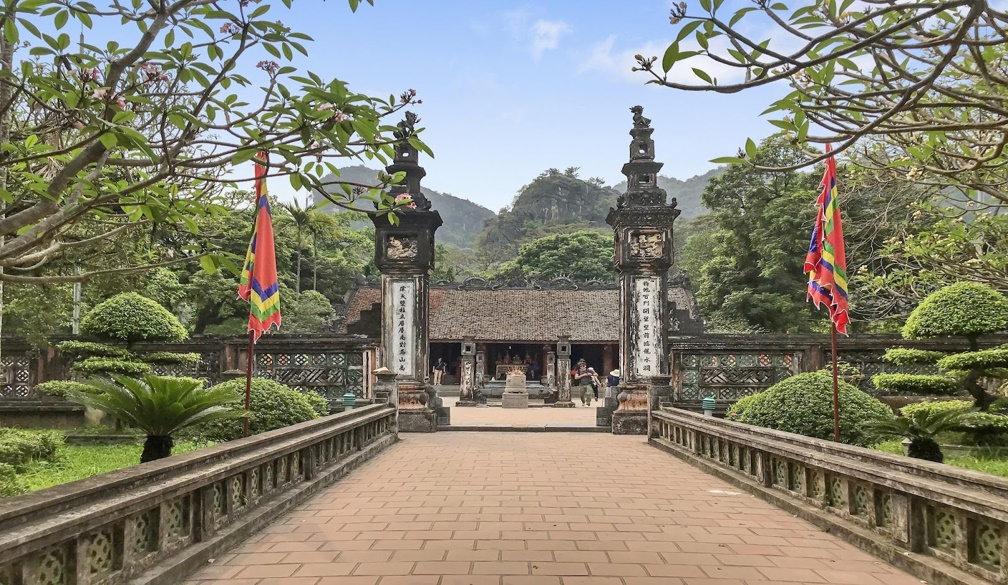10 Days Through Vietnam: Honest Reflections from a Budget Adventure

Traveling through Vietnam had been on my bucket list for years. I’d seen the postcard shots of Halong Bay and read stories about the lanterns in Hoi An, but nothing quite prepares you for the real thing, especially when you experience it all in just 10 days.
I joined a small group tour that covered north to south Vietnam, and while it was marketed as “budget-friendly,” it delivered way more than I expected. Here’s what that journey looked like, and what I learned along the way. You can also find more details about my Vietnam itinerary here.
Day 1: First Impressions in Hanoi
After a long flight, landing in Hanoi felt like stepping into organized chaos—motorbikes buzzing everywhere, the scent of street food wafting through the air, and history in every building. I was exhausted but also wide-eyed.
That first day was mostly rest, but I managed to squeeze in a walk around the Old Quarter and visit the Temple of Literature. It's quieter there—shaded courtyards, ancient stone carvings—and it gave me a peaceful start after the long trip.
Tip: If you arrive early, take a short walk. It’s a great way to orient yourself without overdoing it on day one.
Day 2: Ninh Binh’s Surprising Calm
We left the city early for a day trip to Ninh Binh, a place that honestly deserves more hype. Floating through Tam Coc on a small rowboat, surrounded by limestone cliffs and golden rice fields, was surreal.
Later, we explored Hoa Lu, Vietnam’s ancient capital, where old stone temples whispered stories of past dynasties. The guide made the history stick—clear, passionate, and never overdone.
Lunch was local and fresh. Nothing fancy, but good food, good people, and scenery that made you pause.
Advice: Go in the spring or early summer if you want to see the rice fields glowing gold along the river.
Day 3: Halong Bay – Even Better Than the Photos
This was a highlight for sure. We cruised through Halong Bay’s dramatic limestone pillars, ate freshly prepared seafood, and explored the giant Sung Sot Cave.
On Titop Island, a short hike led to one of the best views I’ve ever seen—jagged cliffs rising from emerald water, a few boats bobbing below. Back on board, the sunset was pure magic.
After the cruise, we returned to Hanoi and caught the overnight train to Hue. It’s basic—shared bunks, gentle rattling, communal restrooms—but part of the experience. If you're light on sleep, consider upgrading to a private cabin.
Packing tip: Bring a scarf or something soft to act as a pillow, and snacks for the ride.
Day 4: Hue and Its Royal Legacy
We arrived early in Hue and had time to relax before visiting the tombs of Tu Duc and Khai Dinh. These places are more than just burial grounds—they're artistic, symbolic, and set in tranquil landscapes.
Hue itself is quieter than Hanoi or Saigon. It felt like a place where people move slowly, and everything carries a story.
Day 5–6: The Magic of Hoi An
Driving over the Hai Van Pass was a show in itself—misty mountains, ocean views, and the kind of switchbacks that make you reach for your camera.
Hoi An, though? It’s something else. The streets glow with lanterns at night, and the town hums with calm creativity. The hotel was charming and central, with kind staff and cool tile floors that felt great after long walks.
We toured key landmarks in the Old Town, tried local drinks, and watched tailors craft suits in a day. It’s a shopper’s paradise, but also just a deeply peaceful place to wander.
Suggestion: Get custom clothes made. The tailoring here is fast and shockingly affordable, definitely a must during your Vietnam trip.
Day 7–8: Ho Chi Minh City and the Cu Chi Tunnels
The overnight train to Ho Chi Minh City was long but surprisingly meditative. Watching the countryside blur by made for a good transition from the calm of Hoi An to the chaos of Saigon.
We hit the ground running with a visit to the Cu Chi Tunnels. Crawling through the narrow passages (or trying to) gave me a whole new appreciation for the resilience and ingenuity of those who lived there.
Back in the city, we explored colonial architecture, museums, and war memorials—powerful, heavy, and important. Our hotel in Saigon was modern, clean, and in walking distance to key sights. A great base for exploration.
Day 9: The Mekong Delta – A Different Kind of Vietnam
This day was quieter, gentler. We cruised on narrow canals, visited a candy workshop, and rode through villages on rustic carts. The pace was slow, the people warm, and the fruit tastier than anything back home.
This part of the trip felt like a soft landing—a chance to connect with daily life in the countryside after the intensity of the cities.
Final Thoughts
This trip wasn’t about luxury. It was about balance. We saw iconic places, but also everyday scenes. We learned history, but also shared laughs and quiet moments. And even with a modest budget, we stayed in clean, welcoming hotels and traveled comfortably.
One of the biggest reasons it all worked so smoothly was booking through BestPrice Travel. From the very beginning, they were incredibly responsive—my questions were answered within hours, sometimes minutes. Everything was clearly communicated, and every day of the trip ran like clockwork.
They’ve really mastered the art of organizing a trip that feels rich in experience but light on cost. No wasted time, no hidden surprises—just a well-planned itinerary that made the most of every moment (and every dong).
If you’re looking to explore Vietnam deeply without spending a fortune, I genuinely recommend going with a small group tour like this through BestPrice. It gave me space to just experience, without worrying about the logistics. And sometimes, that’s the biggest gift you can give yourself while traveling.













